The monumental 3-volume magna-opus of Srila Sanatana Goswami.
TRANSLATION AND COMMENTARY BY GOPIPARANADHANA DASA.
Sri Brhad-Bhagavatamrta is an epic work composed in Sanskrit during the sixteenth century by Sanatana Goswami, one of Lord Chaitanya Mahaprabhu’s leading disciples. It is one of the first books written by any of the Six Goswamis of Vrindavan.
Sri Brhad-bhagavatamrta is a transcendental literature that any serious student of Krishna theology or any serious practitioner of bhakti tradition must hold dear to the heart. In the form of two narratives, Srila Sanatana Goswami had described the science of bhakti through the journey of a devotee who tries to understand the devotees of Krishna by way of examination of various categories of devotees and through a sweet narrative of how a devotee attains spiritual perfection. It is pilgrims progress. Spiritual perfection takes efforts and these efforts are step by step process leading to the greatest perfection. The epic, Mahabharat, has said, mahajano yena gatha sa pantha, that the path of the greats must be followed to attain success. Sri Brhad-bhagavatamrta therefore provides such a platform.
Sri Brhad-bhagavatamrta is a sacred text for practitioners of Gaudiya Vaishnavism. Along with Hari-bhakti-vilasa, it is one of the most important works of Vaishnava theologian Sanatana Goswami. While Hari-Bhakti-Vilasa sets out guidance for Vaishnava behaviour and ritual, Sri Brhad-bhagavatamrta contains an analysis of the teachings of Lord Chaitanya from an ontological and metaphysical perspective.
In the first part of Sri Brhad-bhagavatamrta, Srila Sanatana Goswami has described a conversation between Parikshit and his mother, Uttara. It took place after Parikshit heard the Bhagavata Purana from Śukadeva Goswami. Uttara asked her son to explain the essence of Bhagavata Purana, and Parikshit revealed to her the stages of confidential Bhakti. He told her a story about how Narada was looking for greatest devotee of Krishna. The Great Rishi began his search with devotees of Krishna whose Bhakti was mixed with karma and jnana (Brahma and Shiva), then went up to Shanta-rasa (Prahlada), Dasya-rasa (Hanuman), Sakhya-rasa (Arjuna), and finally came to the greatest devotee of Krishna – Uddhava, who always longed to be in Vrindavan, and showed that the highest level of Bhakti is the love of the gopis for Krishna.
The second part of the Sri Brhad-bhagavatamrta tells us about the glory and bliss of the spiritual abode Goloka, as well as of the process of renunciation of the material world, true knowledge, Bhakti Yoga, love for Krishna and implementation of the higher purpose of life. The second part contains the narrative of a wandering cowherd boy, Gopal Kumar who received a mantra from a resident of Vrindavan, travelling from one planetary system to another, exploring the different levels of consciousness of living beings. His spiritual odyssey covers heavenly planets, Brahmaloka, Shivaloka, Vaikuntha, and ultimately Goloka.
Sri Brhad-bhagavatamrta contains descriptions of the various categories of devotees of Krishna: close devotees, and devotees of the closest devotees. His Divine Grace, Srila A.C. Bhaktivedanta Swami Prabhupada in his comments to the Sri Chaitanya-charitamrita (Adi Lila, 5.203) wrote in praise of the wirings of Srila Sanatana Goswami as follows:
Śrī Sanātana Gosvāmī Prabhu, the teacher of the science of devotional service, wrote several books, of which the Bṛhad-bhāgavatāmṛta is very famous; anyone who wants to know about the subject matter of devotees, devotional service and Kṛṣṇa must read this book. Sanātana Gosvāmī also wrote a special commentary on the Tenth Canto of Śrīmad-Bhāgavatam known as the Daśama-ṭippanī, which is so excellent that by reading it one can understand very deeply the pastimes of Kṛṣṇa in His exchanges of loving activities. Another famous book by Sanātana Gosvāmī is the Hari-bhakti-vilāsa, which states the rules and regulations for all divisions of Vaiṣṇavas, namely, Vaiṣṇava householders, Vaiṣṇava brahmacārīs, Vaiṣṇava vānaprasthas and Vaiṣṇava sannyāsīs. This book was especially written, however, for Vaiṣṇava householders. Śrīla Raghunātha dāsa Gosvāmī has described Sanātana Gosvāmī in his prayer Vilāpa-kusumāñjali, verse six, where he has expressed his obligation to Sanātana Gosvāmī in the following words:
vairāgya-yug-bhakti-rasaṁ prayatnair
apāyayan mām anabhīpsum andham
kṛpāmbudhir yaḥ para-duḥkha-duḥkhī
sanātanas taṁ prabhum āśrayāmi
“I was unwilling to drink the nectar of devotional service possessed of renunciation, but Sanātana Gosvāmī, out of his causeless mercy, made me drink it, even though I was otherwise unable to do so. Therefore he is an ocean of mercy. He is very compassionate to fallen souls like me, and thus it is my duty to offer my respectful obeisances unto his lotus feet.”
Kṛṣṇadāsa Kavirāja Gosvāmī also, in the last section of the Caitanya-caritāmṛta, specifically mentions the names of Rūpa Gosvāmī, Sanātana Gosvāmī and Śrīla Jīva Gosvāmī and offers his respectful obeisances unto the lotus feet of these three spiritual masters, as well as Raghunātha dāsa. Śrīla Raghunātha dāsa Gosvāmī also accepted Sanātana Gosvāmī as the teacher of the science of devotional service
SRI BRHAD BHAGAVATAMRTA IS IN TWO PARTS:
Part One:
Finding the Essence of the Supreme Lord’s Mercy: Śrī-bhagavat kṛpā-sāra-nidhāra
1. Chapter 1: Bhauma On the Earth
2. Chapter 2: Divya In Heaven
3. Chapter 3: Prapancatita: Beyond the Material World
4. Chapter 4: Bhakta: the Devotee
5. Chapter 5: Priya: The Beloved
6. Chapter 6: Priyatama: The Most Beloved
7. Chapter 7: Purna: the complete Perfection
Part Two – The Glories Of Goloka: Śrī-goloka-māhātmya
Chapter 1 – Vairāgya: Renunciation
Chapter 2 – Jñāna: Knowledge
Chapter 3 – Bhajana: Worship
Chapter 4 – Vaikuṇṭha: The Spiritual Kingdom
Chapter 5 – Prema: Love of God
Chapter 6 – Abhīṣṭa-lābha: The Attainment of All Desires
Chapter 7 – Jagad-ānanda: The Bliss of the Worlds


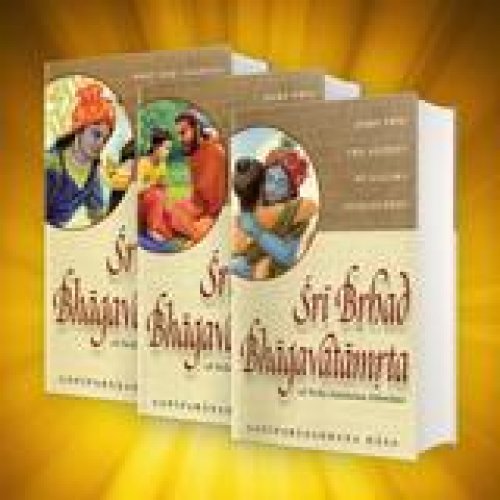
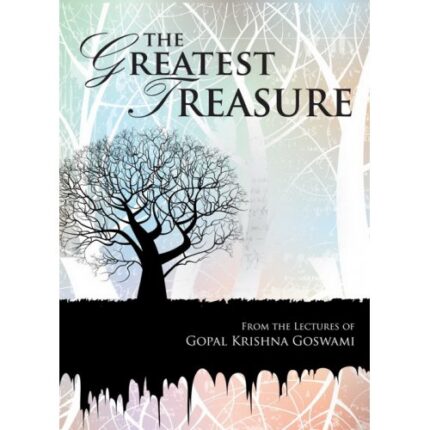
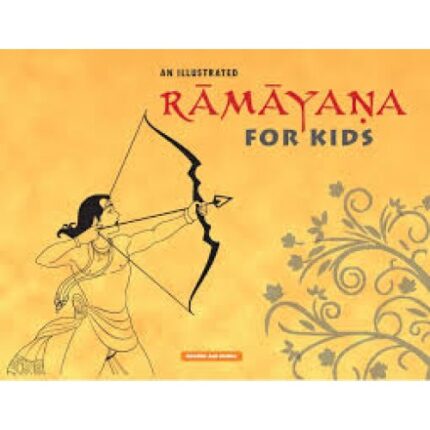


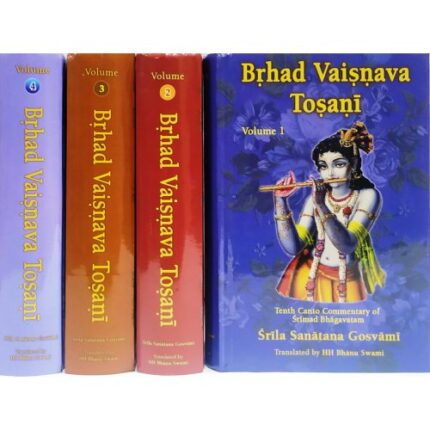
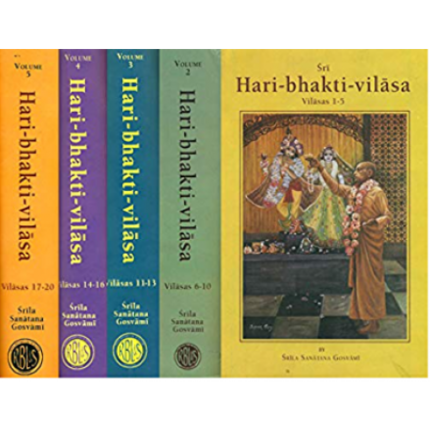
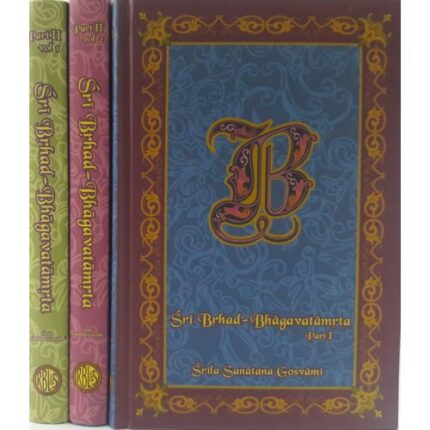
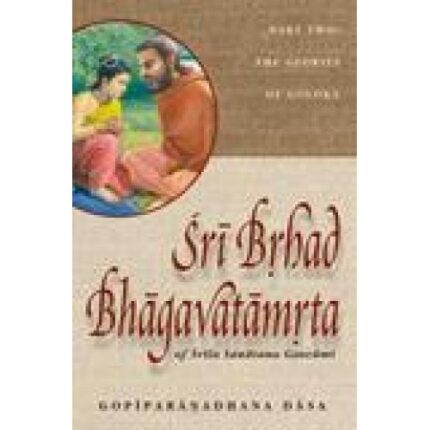

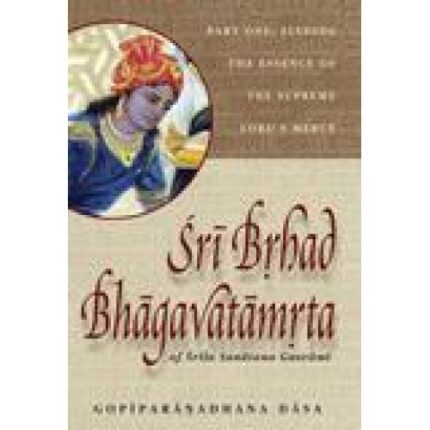
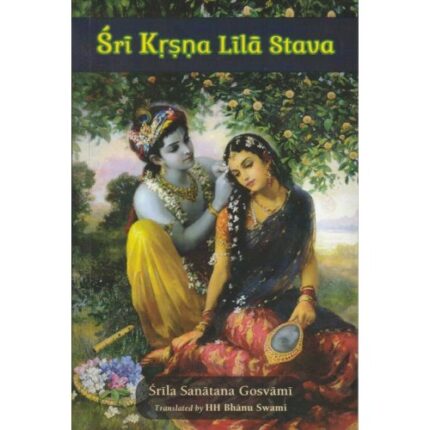
Reviews
There are no reviews yet.